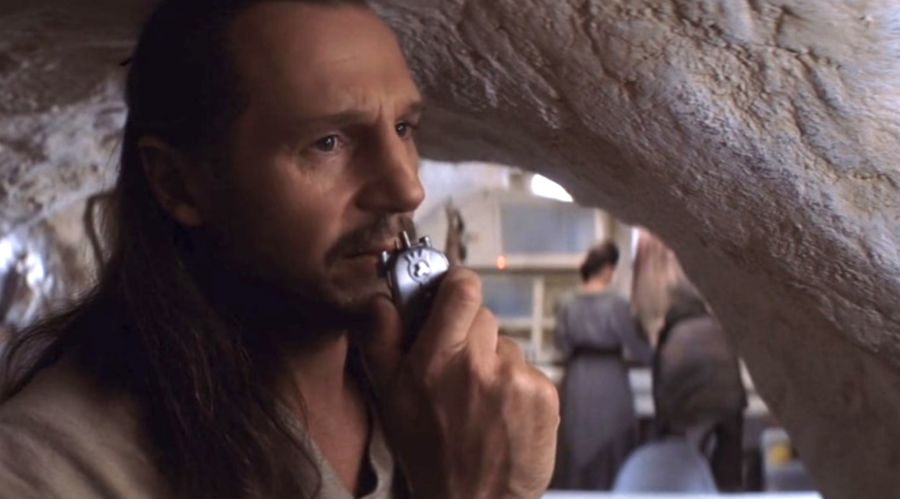Liam Neeson Had To Talk Into A Ladies Razor To Play Qui-Gon In Star Wars
Liam Neeson used a Gillette Ladies Sensor Excel Razor as a personal communicator in Star Wars: The Phantom Menace

If you thought that the Gillette Ladies Sensor Excel Razor was only good for a smooth, quick shave free of razor burn, then you thought wrong! In fact, a resin cast of this very razor was used in Star Wars: The Phantom Menace to represent Qui-Gon Jinn’s (Liam Neeson) personal communicator, according to Mashable. You read that correctly; sometimes Star Wars requires state-of-the-art CGI to drive the story along, but sometimes all that’s needed is a little piece of plastic, and a little bit of imagination to go along with it.
Believe it or not, this is actually a common practice in filmmaking, and not exclusive to only Star Wars. A couple of notable examples of this kind of special effects trickery include Mad Max’s face muzzle, which was made from a gardening fork, and the wall panels from Star Trek: Deep Space Nine, which are nothing more than plastic shipping pallets that anybody could order online! And we’re talking about big-budget films here, so what gives?

The simple fact of the matter is that while big-budget films have a seemingly infinite amount of funds to throw around to build props and render scenery, sometimes a more practical approach just looks better on camera (and on the bottom line). Sure, George Lucas could have pulled no stops in creating a personal communication device for Qui-Gon Jinn in Star Wars, but if there’s an easier, more affordable approach, why would he consider anything other than a trusty Gillette razor?
It’s also worth noting that while sporting a pretty involved beard, Qui-Gon Jinn does look well groomed no matter what kind of adversity he’s facing, so maybe the razor-turned-personal communicator still serves its primary function off-screen (but a more reasonable assumption to make is that Liam Neeson had his hair and makeup done by a professional)!
The Star Wars franchise is no stranger to using practical props and effects when the situation calls for it, and Qui-Gon Jinn’s personal communicator is just one of many instances you can see if you look closely enough.
In fact, Luke Skywalker’s macro-binoculars were made out of several vintage cameras and lenses that were then fashioned together to make the iconic optical instrument that you see on screen in Star Wars: Episode IV A New Hope.
Using camera lenses to build a set of prop binoculars makes sense, but in The Empire Strikes Back, there is actually a scene where Willrow Hood, a resident of Cloud City, is seen running with a Hamilton Beach ice cream maker under his arms, and last time we checked the Star Wars canon, we didn’t see anything about the rebels having any emergencies involving a crucial need for mint chocolate chip.
Whether filmmakers are grounded in gritty realism, or producing an epic space opera such as Star Wars, sometimes it just makes sense to take the practical approach when it comes to prop design. This kind of creative ingenuity is also great news for aspiring filmmakers if you think about it. It’s comforting to know that sometimes all you need is patience, imagination, and some trusty household appliances you don’t mind taking apart and repurposing for the sake of telling your story.












